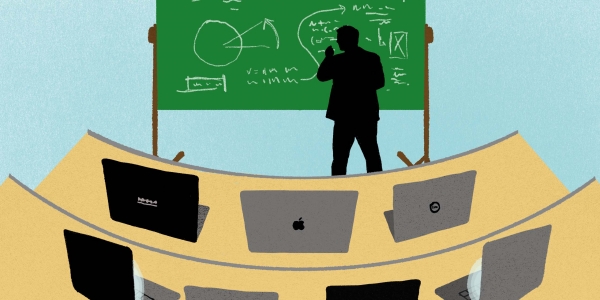
Our world is experiencing unprecedented times as we face the repercussions of the Coronavirus pandemic. Schools have closed their front doors and districts have scrambled to offer access to distance learning as an alternative to traditional methods of education. In a matter of weeks we have abandoned the familiar frameworks of our system. Exams at the state level and accelerated course level, including AICE and IB, have been canceled leaving questions about how we will measure student achievement and determine promotion to the next grade level. As educators, our previous focus had been closing the achievement gap and increasing equity and access for all students. With new norms like social distancing and a mandatory six foot gap between individuals, we must ask ourselves: How will distance learning create distance between students, teachers, and administrators? Are we creating a new achievement gap? What can we do about it?
In less than a week, many school districts created meal distribution plans, technology equipment allocations, teacher training for online learning, and predicted answers for anticipated problems. While this race to ensure educational continuity is admirable, the hurried nature of these solutions has not given educators the chance to consider the long-term implications of these decisions. The article The Biggest Distance-Learning Experiment In History: Week One notes the following inequalities, “Just over half of the nation’s public school children are from families considered low-income, and an estimated 12 million lack broadband Internet access at home” (Kamenetz, 2020). Even if we arm students with laptops and Internet access, even if we provide accommodations and online support, even if we do the best we can… our disadvantaged students will continue to fall behind. The achievement gap is perpetuated and widened by failing to address several key areas:
- Monitoring: Not only for on-task performance but also to check for accuracy, fluency, and address misconceptions.
- Differentiated Instruction: Supporting different learning styles, learning disabilities, and lower level students.
- Meeting Diverse Needs: Cultural, personal, emotional, and educational needs through activities, discussions, and content.
- Culturally Responsive Teaching (CRT): Include culture and background and motivating students to take ownership in their learning.
- Relationship Building: Increased trust, sense of belonging, and engagement in learning, decreases likelihood in dropping out.
Distance learning has most notably gained popularity in post-secondary education. The flexible format allows students to complete coursework despite barriers that may hinder them to enroll in a traditional course (i.e. work hours, family obligations). Even with its increased availability, studies have shown that it is not a perfect alternative for face-to-face courses. Concerns exist regarding student attention span, decreased rigor of coursework, and lack of accountability. Additionally, studies at the post-secondary level such as one from George Mason University have similar findings regarding disadvantaged students, “Students in online education, and in particular underprepared and disadvantaged students, underperform and on average, experience poor outcomes” (Newton, 2019).
This is not an argument against distance learning as a response to the Coronavirus pandemic. This is a call to act for educators everywhere. During unprecedented times, we have been asked to pivot and respond the best we can. Being aware of the achievement gap this new system creates is the first step to finding a way to narrow it. Once the infrastructure is up and running, we can begin focusing on the achievement of all students by focusing on the key areas this system leaves to be desired. In the days and weeks to come, taking note of the struggles will help find solutions in the future.
Kamenetz, A. (2020). The biggest distance-learning experiment in history: Week one. Houston Public Media. Retrieved from https://www.houstonpublicmedia.org/npr/2020/03/26/821921575/the-biggest-distance-learning-experiment-in-history-week-one/
Newton, D. (2019). What if online education simply doesn’t work? F Retrieved from https://www.forbes.com/sites/dereknewton/2019/05/29/what-if-online-education-simply-doesnt-work/#3ce389516764